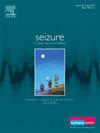三全外显子组测序和仅先证者靶向外显子组测序在复杂儿童癫痫中的诊断产量的现实世界比较
IF 2.7
3区 医学
Q2 CLINICAL NEUROLOGY
引用次数: 0
摘要
目的:外显子组测序是病因不明的儿童耐药癫痫(DRE)分子诊断的首选方法,特别是具有基因型-表型异质性挑战的发育性和癫痫性脑病(DEE)。本研究评估了三全外显子组测序(trio-WES)与基于面板的靶向外显子组测序(TES)的诊断效用。方法对400例确诊为复杂小儿癫痫综合征(病因不明的难治性局灶性/全身性癫痫和DEE)的先证者(发病年龄≥12岁)进行基因检测。在400名先证者中,158人接受了三次wes, 242人接受了TES。结果总体致病/可能致病变异率相似,242例TES患者为42.1 %,158例三组wes患者为42.4 %。然而,在trio-WES鉴定的67种致病变异中,67.2 %在基线评估时被确定为从头开始。一个主要的亮点是,在28例不确定/阴性TES患者中,有10例(35.7 %)获得了三次wes诊断。成本分析显示,在儿童早期,新发致病变异可能是病因的情况下,三重wes(534美元)可能是更具成本效益的方法,因为在TES结果阴性或不确定后订购它将增加成本。结论:本研究表明,在确定不明原因的儿童DRE表型的从头遗传病因方面,三重wes是一种有用且经济有效的工具。本文章由计算机程序翻译,如有差异,请以英文原文为准。
A real-world comparison between the diagnostic yield of trio-whole exome sequencing and proband-only targeted exome sequencing in complex childhood epilepsy
Purpose
Exome sequencing is the preferred method for the molecular diagnosis of childhood drug-resistant epilepsies (DRE) of uncertain etiology, particularly the developmental and epileptic encephalopathies (DEE) with a challenge being genotype-phenotype heterogeneity. This study assesses the diagnostic utility of trio-whole exome sequencing (trio-WES) over a panel-based targeted exome sequencing (TES).
Methods
We performed genetic testing in 400 probands (age of onset <12 years) who had been diagnosed with complex pediatric epilepsy syndromes (refractory focal/generalized epilepsies of uncertain etiology and DEE). Among the 400 probands, 158 underwent trio-WES and 242 underwent TES.
Results
The overall yield of pathogenic/likely pathogenic variants was similar, at 42.1 % for 242 patients who underwent TES and 42.4 % for 158 patients with trio-WES. However, among 67 disease causing variants identified by trio-WES, 67.2 % were established as de novo at baseline evaluation. A major highlight is that trio-WES achieved a diagnosis in 10 (35.7 %) of 28 patients with inconclusive/negative TES. The cost analysis shows that trio-WES ($534) is probably the more cost-effective method in early childhood wherein de novo pathogenic variants are likely to be causative, as ordering it after negative or inconclusive TES results will have an added cost.
Conclusion
This study demonstrates real world utility of trio-WES as a useful and cost-efficient tool for determining de novo genetic etiologies for unexplained childhood DRE phenotypes.
求助全文
通过发布文献求助,成功后即可免费获取论文全文。
去求助
来源期刊

Seizure-European Journal of Epilepsy
医学-临床神经学
CiteScore
5.60
自引率
6.70%
发文量
231
审稿时长
34 days
期刊介绍:
Seizure - European Journal of Epilepsy is an international journal owned by Epilepsy Action (the largest member led epilepsy organisation in the UK). It provides a forum for papers on all topics related to epilepsy and seizure disorders.
 求助内容:
求助内容: 应助结果提醒方式:
应助结果提醒方式:


